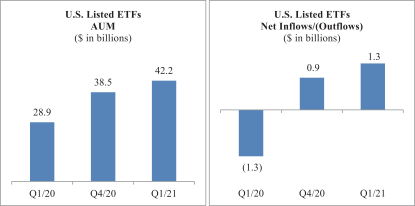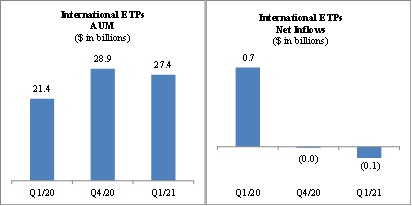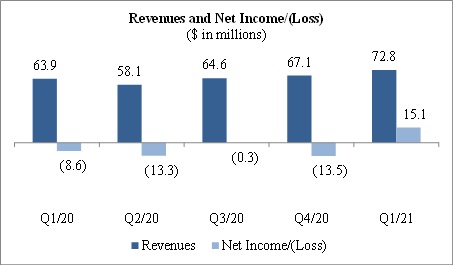The Company recognizes contingent payments when the contingency is resolved and the gain is realized.
Basic earnings per share (“EPS”) is computed by dividing net income available to common stockholders by the weighted-average number of common shares outstanding for the period. Net income available to common stockholders represents net income of the Company reduced by an allocation of earnings to participating securities. The Series A
non-voting
convertible preferred stock (Note 18) and unvested share-based payment awards that contain
non-forfeitable
rights to dividends or dividend equivalents (whether paid or unpaid) are participating securities and are included in the computation of EPS pursuant to the
two-class
method. Share-based payment awards that do not contain such rights are not deemed participating securities and are included in diluted shares outstanding (if dilutive).
Diluted EPS is calculated under the treasury stock method and the
two-class
method. The calculation that results in the lowest diluted EPS amount for the common stock is reported in the Company’s consolidated financial statements. The treasury stock method includes the dilutive effect of potential common shares including unvested stock-based awards, the Series A
non-voting
convertible preferred stock and the convertible notes, if any. Potential common shares associated with the Series A
non-voting
convertible preferred stock and the convertible notes are co
m
puted under the
if-converted
method. Potential common shares associated with the conversion option embedded in the convertible notes are dilutive when the Company’s average stock price exceeds the conversion price.
The Company accounts for income taxes using the liability method, which requires the determination of deferred tax assets and liabilities based on the differences between the financial and tax bases of assets and liabilities using the enacted tax rates in effect for the year in which differences are expected to reverse. Deferred tax assets are reduced by a valuation allowance if, based on the weight of available evidence, it is
more-likely-than-not
that some portion or all the deferred tax assets will not be realized.
Tax positions are evaluated utilizing a
two-step
process. The Company first determines whether any of its tax positions are
more-likely-than-not
to be sustained upon examination, based solely on the technical merits of the position. Once it is determined that a position meets this recognition threshold, the position is measured as the largest amount of benefit that is greater than 50% likely of being realized upon ultimate settlement. The Company records interest expense and penalties related to tax expenses as income tax expense.
The Global Intangible
Low-Taxed
Income (“GILTI”) provisions of the Tax Reform Act requires the Company to include in its U.S. income tax return foreign subsidiary earnings in excess of an allowable return on the foreign subsidiary’s tangible assets. An accounting policy election is available to either account for the tax effects of GILTI in the period that is subject to such taxes or to provide deferred taxes for book and tax basis differences that upon reversal may be subject to such taxes. The Company accounts for the tax effects of these provisions in the period that is subject to such tax.
Non-income
based taxes are recorded as part of other liabilities and other expenses.
Recently Adopted Accounting Pronouncements
On January 1, 202
1
, the Company early adopted ASU
2020-06,
Debt – Debt with Conversion and Other Options
(ASU
2020-06)
under the modified retrospective approach. Under the ASU, the accounting for convertible instruments was simplified by removing major separation models required under current GAAP. Accordingly, more convertible instruments are reported as a single liability or equity with no separate accounting for embedded conversion features. Certain settlement conditions that are required for equity contracts to qualify for the derivative scope exception are removed and, as a result, more equity contracts will qualify for the scope exception. The ASU also simplifies the diluted
calculation in certain areas. Upon the adoption of this
the Company reclassified the equity component related to the convertible notes, net of deferred taxes, increasing retained earnings by $616, increasing the carrying value of the convertible notes by $4,088, reducing additional
paid-in capital
by $3,682 and reducing deferred tax liabilities by $1,022. These updates also reduced interest expense recognized on the Company’s convertible notes by approximately $420 per quarter (Note 10).
On January 1, 2021, the Company adopted ASU
2019-12,
Income Taxes (Topic 740) – Simplifying the Accounting for Income Taxes
(ASU
2019-12).
The main objective of the standard is to reduce complexity in the accounting for income taxes by removing the following exceptions: (1) exception to the incremental approach for intraperiod tax allocation when there is a loss from continuing operations and income or a gain from other items (for example, discontinued operations or other comprehensive income); (2) exception to the requirement to recognize a deferred tax liability for equity method investments when a foreign subsidiary becomes an equity method investment; (3) exception to the ability not to recognize a deferred tax liability for a foreign subsidiary when a foreign equity method investment becomes a subsidiary; and (4) exception to the general methodology for calculating income taxes in an interim period when a
loss exceeds the anticipated loss for the year. The standard also simplifies the accounting for income taxes by enacting the following: (a) requiring that an entity recognize a franchise tax (or similar tax) that is partially based on income as an income-based tax and accoun
t
for any incremental amount as a
non-income-based
tax; (b) requiring that an entity evaluate when a step up in the tax basis of goodwill should be considered part of the business combination in which the book goodwill was originally recognized and when it should be considered as a separate transaction; (c) specifying that an entity is not required to allocate the consolidated amount of current and deferred tax expense to a legal entity that is not subject to tax in its separate financial statements; and (d) requiring that an entity reflect the enacted change in tax laws or rates in the annual effective tax rate computation in the interim period that includes the enactment date. The Company has determined that the adoption of this standard did not have a material impact on its financial statements.







